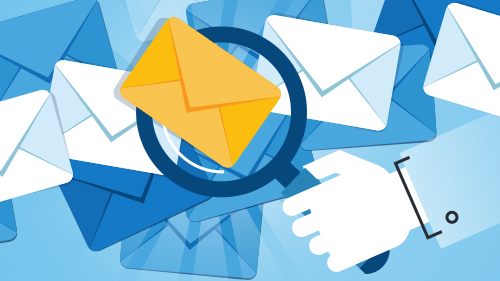
Strategies for Safe and Private Communication for Organizations
Malware and phishing scams aren’t the only cybersecurity risks that emails pose. The content of the emails themselves can be its own risk factor.
Email content can include a treasure trove of exploitable information for cybercriminals. Employees may send passwords or social security numbers via email or share sensitive company information with no way of retracting the email once it’s sent.
John Podesta, Hillary Clinton’s campaign manager in 2016, had his Apple and Twitter accounts hacked, allegedly because of a password sent to him via email.
Emails can also contain content that damages a business’s reputation. Sony Pictures Entertainment’s notorious 2014 email hack exposed emails that generated a flurry of tabloid news because of all the celebrity gossip shared between senders. The leak also resulted in at least one resignation.
If your organization doesn’t have the right security controls to encrypt and protect email, hackers can gain an almost limitless amount of data, including:
If a threat actor can get this information, they may demand a ransom fee to return the leaked data, threaten to release it, or use any pilfered credentials for a worse attack.
Now that natural language processing (NLP) and AI solutions have become so advanced, hackers can easily sift through enormous caches of emails to find important data that can compromise an organization. Securing email channels is absolutely required to stay safe — here’s the best way to do this.
Preventing unauthorized email access starts by hardening account security. A compromised email account isn’t the only way in. Hackers can gain access to a user’s phone or computer and be able to access emails on that device. That’s why it’s important to harden account access across multiple applications through multi-factor authentication (MFA). This includes other communication channels such as Slack accounts, intranet accounts, development portal accounts, and any other account an employee uses constantly.
IAM identifies users on the network and checks their rights to determine if they can access a specific resource, such as an email account. These tools were used to protect the edges of a network, but now far more access control is required because of remote working and multi-device access – including the use of personal devices.
Companies dealing with extremely sensitive data, such as security companies, law firms, or medical companies, might want to implement an E2E solution.
E2E encrypts all outgoing and incoming emails so an external party can’t read them if the data is intercepted. These solutions are a bit more fussy than traditional email services, but they’re very helpful for protecting extremely sensitive email comms and should be considered by any company working in a high-risk sector.
Setting email policies and training employees on them can help. Policies should include:
Although such suggestions might seem “obvious” to security professionals, untrained employees may act unwittingly, believing that their emails are completely secure.
Preventing the interception of in-transit emails can also prevent the information from getting into the wrong hands. This requires securing your company’s network, especially for remote workers.
Sophisticated attackers can execute “man in the middle” attacks and intercept emails when certain conditions are met. One of the simplest ways to reduce the chances of this happening is to ensure that users connect to the internet using a VPN (virtual private network) and that they avoid public WiFi.
Your company can also invest in an IDS (Intrusion and Detection System) or IPS (Intrusion Prevention System).
An IDS scans network traffic to identify suspicious activity based on known threat signatures and anomalous traffic patterns to detect potential security breaches. Once it detects a threat, it alerts network administrators so they can take action.
An IPS performs many of the same tasks, but it is more proactive and attempts to take automated actions to stop a detected threat. These tools can identify interception attacks and block traffic from the source to prevent further interference.
By intercepting DNS queries, hackers can redirect email traffic to malicious servers and intercept all of an organization’s emails. By encrypting DNS queries, hackers won’t know what domain the client is requesting; this prevents them from intercepting email content.
While some of these security options are more advanced than every organization needs, others are essential for all. However, implementing these tools requires resources that not all have.
This is where a managed security program can help.
A managed security program provides comprehensive security coverage across email, communications, and your company’s network. A good provider can guide you through what you need, so you only implement what makes sense. These providers also charge a fraction of the price of executing all the necessary security in-house, making it a very cost-effective option.
SolCyber offers a managed security program to help companies implement secure email communications. If you’d like to learn more about this program, please reach out to us for a no-obligation call.
LinkedIn: https://www.linkedin.com/company/solcyber
Twitter: https://x.com/SolCyberMSS
Facebook: https://www.facebook.com/solcybermssp
Instagram: https://www.instagram.com/solcyber_mssp/


By subscribing you agree to our Privacy Policy and provide consent to receive updates from our company.






